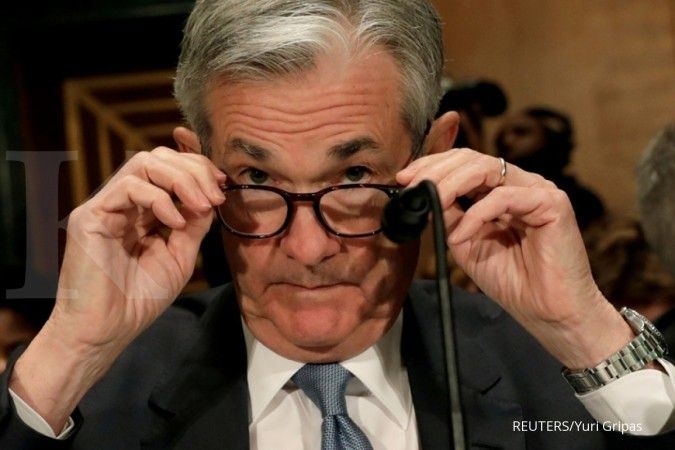Sumber: The Fed | Editor: Hasbi Maulana
The Fed - Transcript of Chairman Powell’s Press Conference
March 21, 2018
CHAIRMAN POWELL. Good afternoon. I have a brief statement and then I’ll be happy to respond to your questions.
The job market remains strong, the economy continues to expand, and inflation appears to be moving toward the FOMC’s 2 percent longer-run goal. As you already know, we decided today to raise the target range for the federal funds rate by 1/4 percentage point, bringing it to 1-1/2 to 1-3/4 percent. This decision marks another step in the ongoing process of gradually scaling back monetary policy accommodation--a process that has been under way for several years now.
Job gains averaged 240,000 per month over the past three months, well above the pace needed in the longer run to absorb new entrants into the labor force. The unemployment rate remained low in February at 4.1 percent, while the labor force participation rate moved higher. Over the past four years, the participation rate has remained roughly unchanged. That’s a sign of improvement, given that the aging of our population is putting downward pressure on the participation rate, and we expect that the job market will remain strong.
Although the growth rates of household spending and business investment appear to have moderated early this year, gains in the fourth quarter were strong and the fundamentals underpinning demand remain solid. Indeed, the economic outlook has strengthened in recent months. Several factors are supporting the outlook: fiscal policy has become more stimulative, ongoing job gains are boosting incomes and confidence, foreign growth is on a firm trajectory, and overall financial conditions remain accommodative.
Against this backdrop, inflation remains below our 2 percent longer-run objective. Overall consumer prices, as measured by the price index for personal consumption expenditures, increased 1.7 percent in the 12 months ending in January. The core price index, which excludes the prices of energy and food and is typically a better indicator of future inflation, rose 1.5 percent over the same period. However, as we have noted for some time, the shortfall of inflation from 2 percent reflects, at least partly, some unusual price declines that occurred nearly a year ago. In coming months, as those earlier declines drop out of the calculation, inflation should move up closer to 2 percent and stabilize around that level over the medium term. Of course, various forces will continue to affect inflation; at times it may be above 2 percent just as at times it may be below. Our inflation objective is symmetric in the sense that we are trying to prevent persistent deviations from 2 percent in either direction.
Based on the projections that Committee participants submitted for this meeting, the median projection for the growth of inflation-adjusted GDP is 2.7 percent this year, 2.4 percent next year, and 2 percent in 2020, a bit above its estimated longer-run rate. The median projection for the unemployment rate stands at 3.8 percent in the fourth quarter of this year and runs at 3.6 percent over the next two years, almost a percentage point below the median estimate of its longer-run normal rate. Finally, the median inflation projection is 1.9 percent this year, 2 percent next year, and 2.1 percent in 2020. Compared with the projections made in December, real GDP growth is stronger, the unemployment rate is lower, and inflation is slightly higher.
As I noted earlier, today’s decision to raise the federal funds rate is another step in the process of gradually scaling back monetary policy accommodation as the economic expansion continues. This gradual process has been under way for more than two years and it has served--and should continue to serve--the economy well.
In making our policy decisions over the next few years, we will continue to aim for inflation of 2 percent while sustaining the economic expansion and a strong labor market. In the Committee’s view, further gradual increases in the federal funds rate will best promote these goals. By contrast, raising rates too slowly would raise the risk that monetary policy would need to tighten abruptly down the road, which could jeopardize the economic expansion. At the same time, we want to avoid inflation running persistently below our objective, which could leave us with less scope to counter an economic downturn in the future.
Participants’ projections of the appropriate path for the federal funds rate reflect our gradual approach. The median projection for the federal funds rate is 2.1 percent at the end of this year, 2.9 percent at the end of 2019, and 3.4 percent at the end of 2020. By 2020, the median federal funds rate is modestly above its estimated longer-run level trend. Most participants revised up their projections since December, although the median projection for this year did not change. The medians for 2019 and 2020 are somewhat higher than in December.
Of course, we’ll be watching how the economy evolves in the months and years ahead relative to our maximum employment and price stability objectives. If the outlook changes, we will adjust monetary policy appropriately.
Finally, I’ll note that our program for reducing our balance sheet, which began in October, is proceeding smoothly. Barring a very significant and unexpected weakening in the outlook, we do not intend to alter this program. As we’ve said, changing the target range for the federal funds rate is our primary means of adjusting the stance of monetary policy. As always, the Committee would be prepared to use its full range of tools if future economic conditions were to warrant a more accommodative monetary policy than can be achieved solely by reducing the federal funds rate.
Thank you, and I’ll be happy to take your questions now.





















